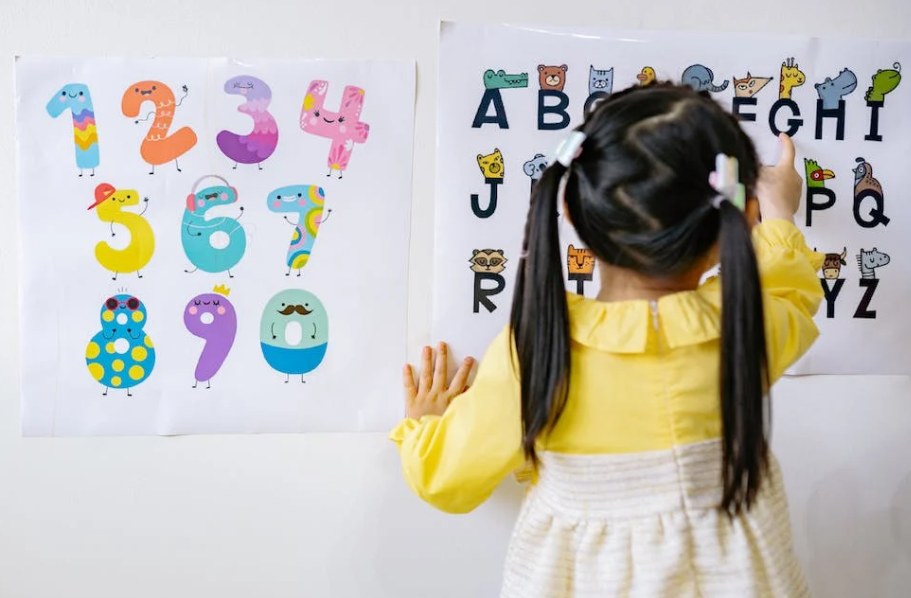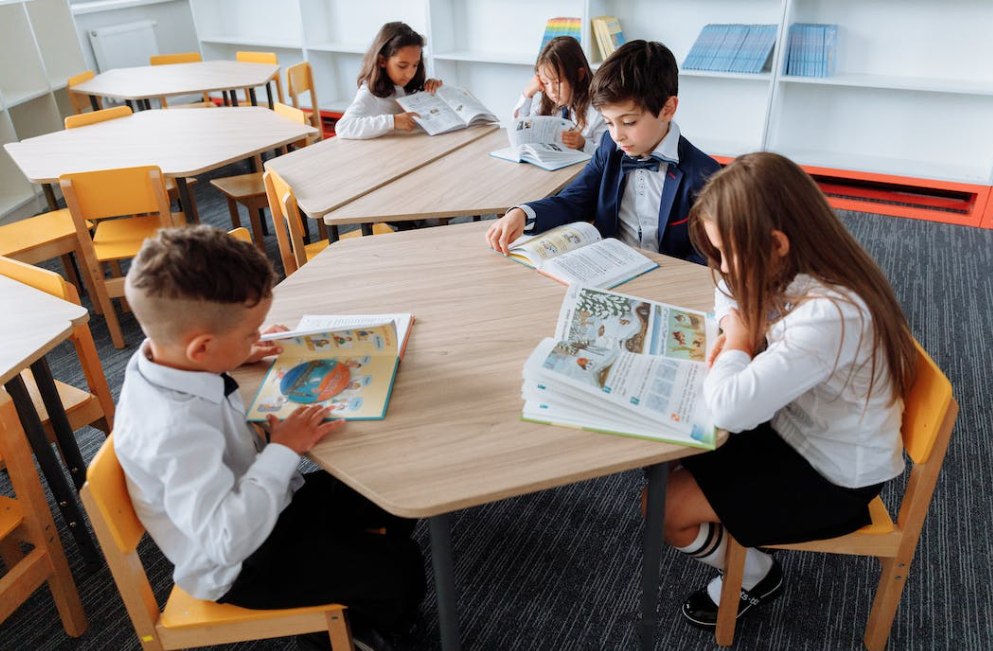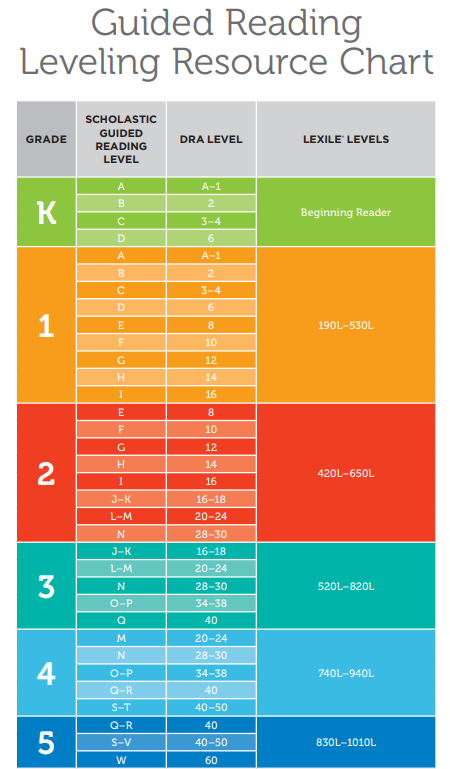One of the favorite activities my seven year old loves to do is curl up with a storybook in bed. When asked what fascinates her about books – she says they take her to a world, to the mindscapes, to the experiences she has never been through before.
Math & ELA | PreK To Grade 5
Kids see fun.
You see real learning outcomes.
Watch your kids fall in love with math & reading through our scientifically designed curriculum.
Parents, try for free Teachers, use for free
Says Jim Rohn and I cannot agree more. In this journey of reading, I realized that I could not randomly pick any book from the bookstore but one that suits my child’s reading level. If the book is too easy, she will not be challenged enough when reading and if it is too hard for her, she will become frustrated and quit reading. So, in order to choose the right books for my child, I need to first find out her “Reading Level”.
“Reading is essential to those who seek to rise above the ordinary.”
If you too are a parent trying to understand what your child’s Reading Levels are and are confused which books to buy for your little reader, you have reached just the right place.
What is “Reading Level”?

Adhering to the child’s Reading level when reading plays a vital role in fostering a child’s passion for language right from the start. If your child attends school, you may already be familiar with the term “Reading Levels”. It serves as a measure of your child’s reading ability, reflecting their proficiency in reading independently. It assists in selecting books that are appropriately challenging yet suitable for your child. When your child reads books that align with their current reading level, it boosts their confidence and enhances their enjoyment of reading. Furthermore, knowing your child’s level enables you to work with them to search for the right books and improve their skills.
How do you assess your child’s Reading level?
There are various ways of measuring the reading skills of your child and determining which books suit his ability. In this article, we will be discussing four types of leveling assessments – GRL, DR, AR and Lexile Reading level measurements.
Guided Reading Levels (GRL)
The importance of guiding our children on their reading journey cannot be overstated. One valuable tool that aids in this process is the concept of Guided Reading Levels (GRL). GRLs offer a framework to assess and support children’s reading abilities, ensuring they receive appropriate instruction and engage with books that match their skills.
These levels provide a standardized way of categorizing books based on their complexity and the skills required for successful reading. They help teachers determine the appropriate reading materials for students at different stages of their reading development.
GRLs are often denoted by letters or numbers, such as Level A, Level 1, or Grade 2. Each level represents a progression in reading difficulty, allowing educators to scaffold instruction and support students’ growth.
Teachers use GRLs to form small reading groups, where students with similar reading abilities work together. In these groups, students engage in guided reading sessions led by the teacher, focusing on targeted instruction, comprehension strategies, and skill development. The GRLs allow teachers to provide differentiated instructions, ensuring that students receive appropriate support and challenges tailored to their reading capabilities.
Accelerated Reader (AR) Atos Level

One program that has gained significant popularity in schools worldwide is Accelerated Reader (AR) with its ATOS Level System. Accelerated Reader (AR) is a comprehensive reading management program developed by Renaissance Learning. It aims to motivate and monitor students’ independent reading practice, providing educators with valuable insights into their students’ progress and offering personalized reading recommendations. At the core of the program is the ATOS (Advantage-TASA Open Standard) Level, which serves as a measure of text complexity.
The ATOS Level is a numerical value assigned to a book based on its difficulty level. It takes into account factors such as word count, sentence length, and vocabulary complexity to determine the text’s overall readability. The ATOS Level ranges from 0.1 to 20.0, with lower values indicating easier texts and higher values representing more challenging ones.
Students participating in the Accelerated Reader program take a short online comprehension quiz after reading a book. The quiz assesses their understanding of the book’s content and helps determine their comprehension level. Based on their quiz results and reading history, students are assigned a recommended ATOS Level for their future book choices. This personalized approach enables students to select books that match their reading abilities, ensuring they are appropriately challenged while still experiencing success.
The implementation of AR ATOS Levels offers numerous benefits, including personalized learning experiences, increased motivation, and improved reading fluency. Students are empowered to select books that align with their reading abilities, balancing challenge and success.
Developmental Reading Assessment (DRA)

The Developmental Reading Assessment is a comprehensive reading assessment that evaluates students’ reading abilities across various components, including accuracy, fluency, and comprehension. One of the key benefits of the Developmental Reading Assessment is its ability to provide individualized instruction.
DR is one of the most widely used assessment tools is the Developmental Reading Assessment (DRA) which assesses students’ reading abilities. It is primarily used in elementary and middle schools to determine a student’s reading level by grade and track their progress over time. Levels of reading by grade provide educators with a standardized framework to assess a student’s reading skills and ensure appropriate instruction and support.
The assessment involves students reading leveled texts and completing corresponding tasks or questions to assess their reading comprehension. Based on their performance, students are assigned a DRA level, which indicates their reading proficiency and guides subsequent instructional decisions.
It is essential to embrace the power of the Developmental Reading Assessment to promote reading success and foster a lifelong love for literacy. By utilizing this assessment tool effectively, we can ensure that each student receives the necessary support and guidance to become confident, skilled readers.
Lexile Measurement

Another method of assessing and determining the appropriate reading materials for students is by finding out the appropriate Lexile Measurement for them. Lexile Measurement is a standardized method for evaluating text complexity and matching it with a reader’s ability. By matching readers with texts that align with their abilities, Lexile measurement promotes personalized reading experiences, supports differentiation, monitors growth, and prepares students for future academic and career success.
Lexile Measurement is a widely recognized and utilized system that assigns a numerical value, known as a Lexile measure, to both texts and readers. The Lexile measure is based on two key components: text complexity and reading comprehension. It allows educators and parents to match readers with texts that align with their reading abilities and promote growth.
Text complexity refers to the difficulty level of a particular piece of text. Lexile measurement analyzes various factors, including sentence structure, vocabulary usage, and sentence length, to determine the complexity of a text. This information is represented by a numerical Lexile measure.
Reader comprehension, on the other hand, focuses on an individual’s reading ability. It considers factors like vocabulary knowledge, reading fluency, and comprehension skills. A reader’s ability is also represented by a Lexile measure.
The goal of Lexile measurement is to find an appropriate match between a reader’s ability and the complexity of the text they encounter. This ensures that readers are challenged enough to grow and develop their skills while still being able to comprehend and engage with the material.
6 Ways to Find the Just the Right Books for Your Child?

As parents, we understand the significance of fostering a love for reading in our children. One key factor in cultivating this passion is finding books that are “just right” for them. These books match their reading level, interests, and developmental stage. Let’s explore a few strategies and resources that parents can utilize to discover those perfect literary gems for their children.
1. Understand Your Child’s Reading Level
Knowing your child’s reading level is the first step in finding “just right” books. This can be determined through assessments conducted at school or by observing your child’s reading fluency, comprehension, and vocabulary. Consult with your child’s teacher or librarian to gain insights into their current reading level.
2. Consider Interests and Themes
Children are more likely to engage with books that align with their interests and passions. Take the time to discover what topics, genres, or characters your child is drawn to. Whether it’s dinosaurs, adventure stories, or science fiction, finding books that capture their imagination will foster a genuine love for reading.
3. Explore Book Recommendations
Online platforms and book review websites tailored for children’s literature, such as Goodreads or Scholastic Book Wizard, can also provide valuable recommendations based on their level of reading and interests.
Related Reading: Best Reading Websites For Kids
4. Visit Libraries and Bookstores
Libraries and bookstores are treasure troves for discovering new books. Spend time exploring the children’s sections and consult the librarians or bookstore staff for recommendations. Many libraries also offer book clubs and reading programs that can expose your child to various genres and authors.
5. Trial and Error
Finding “just right” books may involve some trial and error. Encourage your child to explore different books and genres. If a book doesn’t capture their interest or is too challenging, encourage them to try another. It’s all part of the journey in discovering their personal reading preferences.
6. Read Together
Reading with your child is a wonderful way to bond and explore books together. Choose books that are slightly above their current reading level and take turns reading aloud. This shared experience enhances their reading skills and builds a strong connection and love for storytelling.
Remember, the goal is to provide books that challenge and engage your child while still being enjoyable and accessible. Together, let us embark on this journey of literary exploration, nurturing a lifelong love for reading in our children and opening the doors to a world of knowledge, imagination, and endless possibilities.
What Reading Level Should My Child Be in Each Grade?

As a parent, it’s natural to wonder what level your child should read at each grade. Understanding the appropriate reading level for your child’s grade can help you support their reading progress and ensure they are challenged while still experiencing success. In the following sections, we will delve into the general guidelines for reading levels by grade to help you navigate this reading maze.
Kindergarten Reading Level
In the early years of school, children build up foundational reading skills. At this stage, they typically begin with pre-reading and emergent levels of reading. They learn letter recognition, phonics, and basic sight words. They begin to understand that printed words carry meaning and that letters represent sounds. Developing vocabulary and oral language skills also play a significant role in preparing children for reading.
First Grade Reading levels
In first grade, children continue to build upon the foundational reading skills developed in kindergarten. As they become more confident and independent readers, their reading level progresses, and they explore more complex texts. The children continue to strengthen their phonics and decoding skills, expanding their ability to decode and read unfamiliar words. They become more proficient at blending letter sounds and recognizing common spelling patterns.
Second Grade Reading Levels
As students progress to second grade, their reading abilities continue to develop and expand. They continue to refine their fluency and decoding skills, allowing them to read with greater accuracy, speed, and expression. Students become more confident in tackling unfamiliar words and navigating varied text structures. Their understanding of texts deepens by applying a range of comprehension strategies. They learn to make connections, infer meaning, and analyze story elements, contributing to their overall comprehension skills.
Related Reading: Books For 2nd-Graders That Will Make Them Fall in Love With Reading
Third Grade Reading Levels
Students continue to advance their reading skills and become more proficient and independent readers in the third grade. They move beyond learning to read and focus on reading to learn. Third-grade levels of reading require students to engage with increasingly complex texts, apply comprehension strategies, and expand their vocabulary. They work on reading smoothly, with expression and accuracy, while also deepening their comprehension abilities. Students develop critical thinking skills and explore the elements of different genres.
Fourth Grade Reading Levels
Once a student enters fourth grade, they are expected to read with increasing fluency, comprehend challenging material, and analyze texts critically. Fourth-grade levels of reading require students to read with accuracy, expression, and appropriate pacing. Additionally, they work on increasing their vocabulary to comprehend complex texts effectively. They apply comprehension strategies to understand complex ideas, make connections, and evaluate texts critically.
Fifth Grade Reading Levels
In the fifth grade, students continue to refine their reading skills by focusing on comprehension, vocabulary development, and critical thinking. Fifth-grade levels of reading demand proficiency in understanding multiple genres, making inferences, evaluating arguments, and synthesizing information. Students learn to extract meaning, identify literary elements, and evaluate texts for bias and credibility. They encounter more complex texts that require them to comprehend and use domain-specific vocabulary.
It is important to note that these grade-level reading guidelines are generalizations, and individual children may vary in their reading abilities. Every child progresses at their own pace, and it’s essential to consider their unique strengths and challenges when assessing their reading level.
Related Reading: Best Books for 5th Graders That Will Make Reading Time Fun for Kids
Reading Level Chart
Reading level charts are graphical representations that categorize books or texts based on their complexity and readability. These charts provide a visual guide to help educators, parents, and students select appropriate reading materials based on their reading abilities. Reading level charts typically use various systems or frameworks to classify books into different levels, allowing for easy identification of texts that align with a reader’s proficiency.

Conclusion
In a crux, understanding a chid’s level of reading allows us to guide children on their reading journeys, providing them with appropriate materials that both challenge and engage their developing skills. As we embark on this journey of nurturing young readers, let us remember that reading levels by grade are not restrictive labels but rather stepping stones toward progress and achievement.
Understanding the levels of reading expected at each grade ensures that children are appropriately challenged, building their confidence and competence as readers. We can spark their imaginations, broaden their horizons, and equip them with the skills they need to navigate the complexities of the written word.
So let’s embrace the power of reading levels by grade and use them as compasses, guiding our children toward a future filled with endless possibilities. Together, let us celebrate a world where every child has the opportunity to unlock the magic and transformative power of reading.
Frequently Asked Questions (FAQs)
What is the Basic Reading Level?
A Basic Reading Level typically refers to the ability to read and comprehend simple texts with basic vocabulary and sentence structures.
What is the Highest Reading Level?
The highest reading level refers to advanced reading abilities. This level is associated with individuals with a broad vocabulary and strong comprehension skills.
What is “Level” and “Grade” in reading?
In reading, “level” and “grade” can have slightly different meanings. Reading “level” refers to measuring a reader’s ability to comprehend written text. “Grade” level refers to a standardized measure of the expected reading ability for students at a particular grade or age level.
























